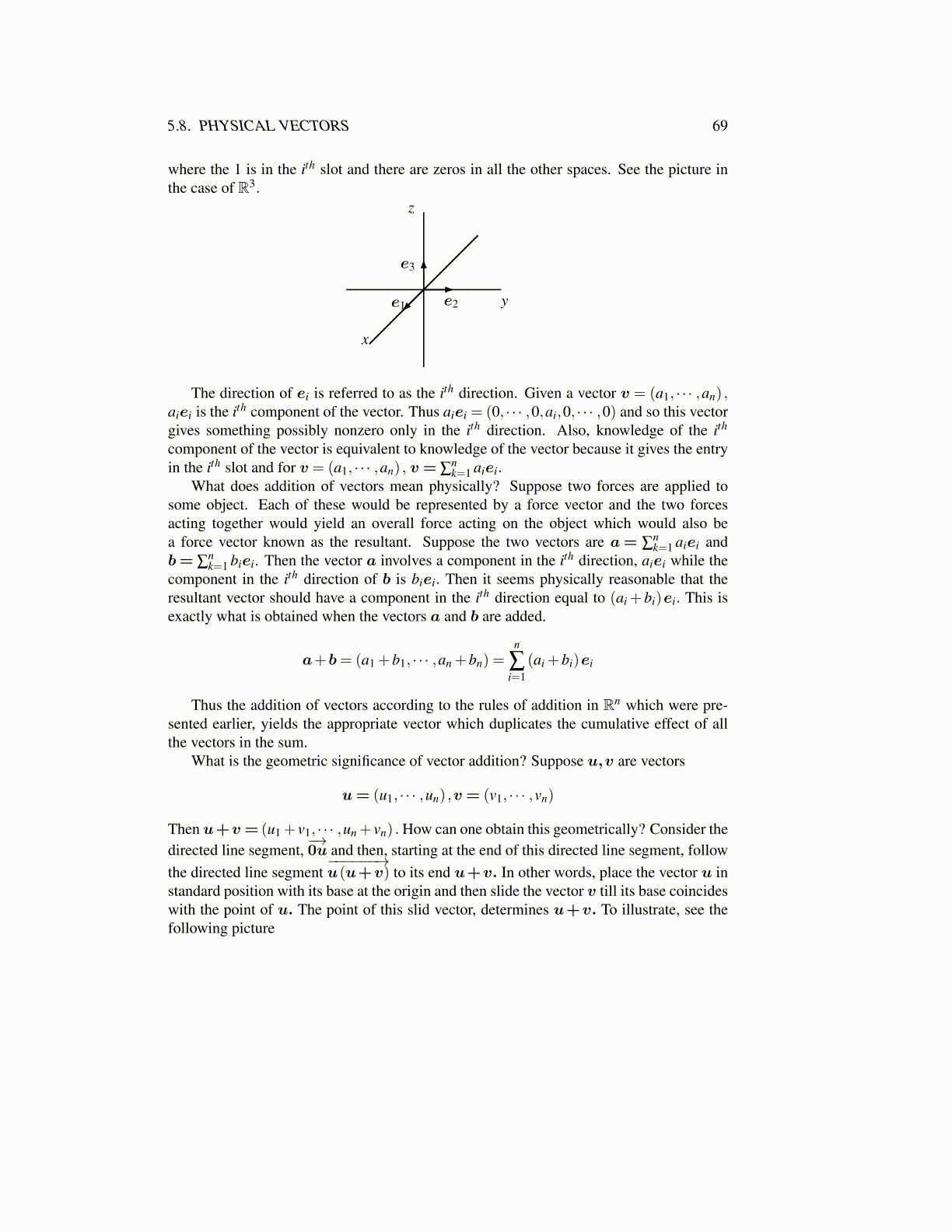
5.8. PHYSICAL VECTORS 69
where the 1 is in the ith slot and there are zeros in all the other spaces. See the picture inthe case of R3.
ye2
z
e3
x
e1
The direction of ei is referred to as the ith direction. Given a vector v = (a1, · · · ,an) ,aiei is the ith component of the vector. Thus aiei = (0, · · · ,0,ai,0, · · · ,0) and so this vectorgives something possibly nonzero only in the ith direction. Also, knowledge of the ith
component of the vector is equivalent to knowledge of the vector because it gives the entryin the ith slot and for v = (a1, · · · ,an) , v = ∑
nk=1 aiei.
What does addition of vectors mean physically? Suppose two forces are applied tosome object. Each of these would be represented by a force vector and the two forcesacting together would yield an overall force acting on the object which would also bea force vector known as the resultant. Suppose the two vectors are a= ∑
nk=1 aiei and
b= ∑nk=1 biei. Then the vector a involves a component in the ith direction, aiei while the
component in the ith direction of b is biei. Then it seems physically reasonable that theresultant vector should have a component in the ith direction equal to (ai +bi)ei. This isexactly what is obtained when the vectors a and b are added.
a+b= (a1 +b1, · · · ,an +bn) =n
∑i=1
(ai +bi)ei
Thus the addition of vectors according to the rules of addition in Rn which were pre-sented earlier, yields the appropriate vector which duplicates the cumulative effect of allthe vectors in the sum.
What is the geometric significance of vector addition? Suppose u,v are vectors
u= (u1, · · · ,un) ,v = (v1, · · · ,vn)
Then u+v = (u1 + v1, · · · ,un + vn) . How can one obtain this geometrically? Consider thedirected line segment,
−→0u and then, starting at the end of this directed line segment, follow
the directed line segment−−−−−−→u(u+v) to its end u+v. In other words, place the vector u in
standard position with its base at the origin and then slide the vector v till its base coincideswith the point of u. The point of this slid vector, determines u+v. To illustrate, see thefollowing picture